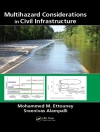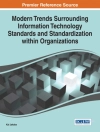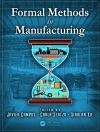- Strong focus on infrastructural requirements for successful urban agriculture, such as public policy and planning frameworks, business models and social networks
- Covers developments in key technologies such as rooftop and vertical farming, as well as waste management
- Includes case studies of particular commodities, including horticultural produce, livestock and forestry
İçerik tablosu
Part 1 Building urban agriculture networks
1.Creating a supportive public policy framework for urban agriculture: Johannes S. C. Wiskerke, Wageningen University, The Netherlands;
2.The changing role of urban agriculture in municipal planning: from planning for urban agriculture to urban agriculture for planning: Nevin Cohen, City University of New York, USA;
3.Urban agriculture and local communities: encouraging engagement, building cohesion, and linking to global agreements: Laine Young, Wilfrid Laurier University, Canada; and Alison Blay-Palmer, Wilfrid Laurier University and The Balsillie School of International Affairs, Canada;
4.Building continuous productive (peri-)urban landscapes: André Viljoen and Katrin Bohn, University of Brighton, UK;
5.Building natural resource networks: urban agriculture and the circular economy: Stefano Pascucci, University of Exeter, UK;
Part 2 Technologies for urban agriculture
6.Rooftop systems for urban agriculture: Elisa Appolloni and Francesco Orsini, Bologna University, Italy; and Cecilia Stanghellini, Wageningen UR Greenhouse Horticulture, The Netherlands;
7.Vertical farming systems for urban agriculture: Dickson Despommier, Columbia University, USA;
8.Redirecting nutrients in urban waste to urban agriculture: Rosanne Wielemaker and Jan Weijma, Wageningen University, The Netherlands;
9.Pest management for urban agriculture: Giovanni G. Bazzocchi, University of Bologna, Italy;
Part 3 Case studies
10.Optimizing horticulture for urban agriculture: B. W. Alsanius, Swedish University of Agricultural Sciences, Sweden; M. Jirström, Lund University, Sweden; M. T. Naznin and S. Khalil, Swedish University of Agricultural Sciences, Sweden; and E.-C. Ekström, Uppsala University, Sweden;
11.Optimizing livestock farming in urban agriculture: Delia Grace, International Livestock Research Institute (ILRI), Kenya; Elizabeth Cook, International Livestock Research Institute (ILRI), Kenya and University of Liverpool, UK; and Johanna Lindahl, International Livestock Research Institute (ILRI), Kenya and Uppsala University and Swedish University of Agricultural Sciences (SLU), Sweden;
12.Optimising aquaculture/aquaponics in urban agriculture: developing rooftop water farms: Anja Steglich, Grit Bürgow and Angela Million, Technical University of Berlin, Germany;
13.Optimizing urban beekeeping: Erik Stange, Norwegian Institute for Nature Research, Norway;
14.Optimising urban forestry: the food connection: Cecil C. Konijnendijk and Hyeone Park, University of British Columbia, Canada;
Yazar hakkında
Beatrix Waechter Alsanius is an internationally leading researcher on sustainable food production in horticultural cropping systems, emphasizing on the use of microorganisms for environmentally-sound cropping systems, threats of human and plant pathogens in horticultural production chains and food safety of vegetables and fruit. Since 2009 her current position is chair professor in horticulture at the Swedish University of Agricultural Sciences (SLU), Alnarp, Sweden. During 2010 to 2013 she acted also as an adjunct professor in phytology at Université Laval, Québec, Canada and headed from 2009-2014 the international postgraduate school ‘Microbial Horticulture (µHORT)’, funded by the Swedish research council Formas.












